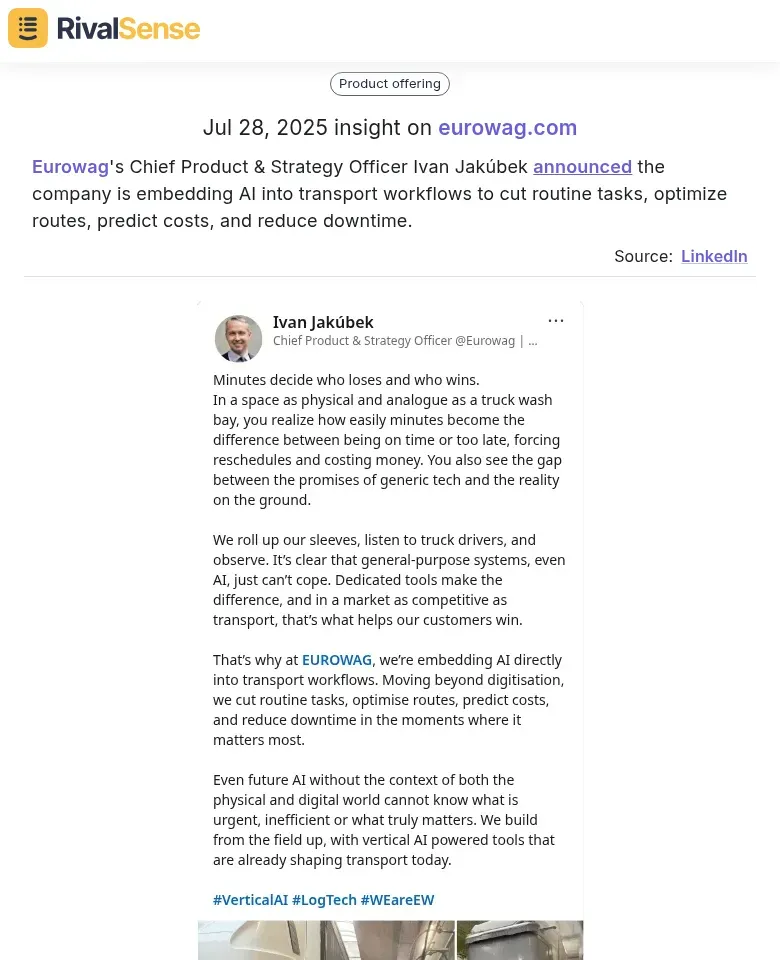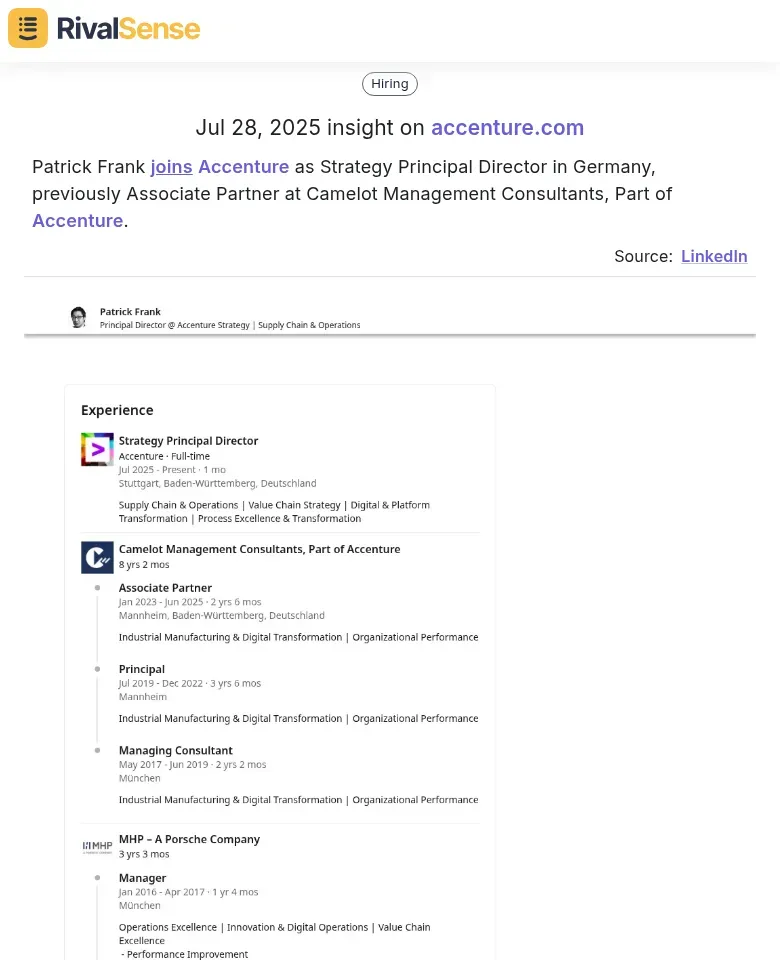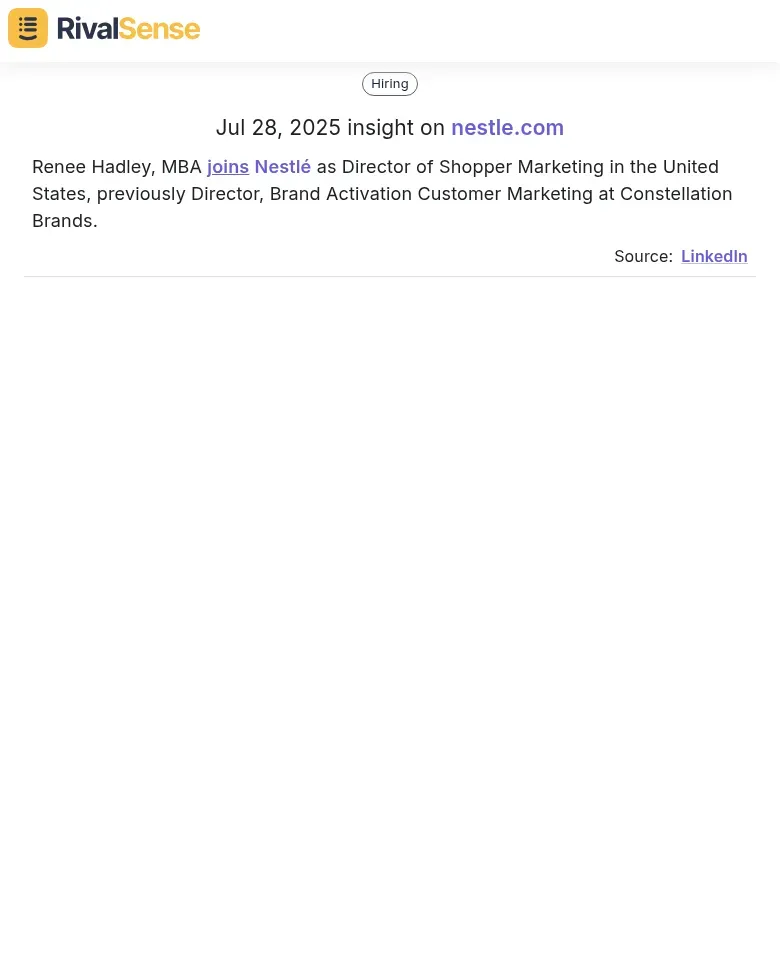Avoid These 5 Mistakes When Creating E-Commerce Competitor Profiles
In the fast-paced world of e-commerce, understanding your competitors isn't just beneficial—it's essential for survival. Competitor profiles serve as your strategic roadmap, revealing rivals' strengths, weaknesses, and tactical plays. This intelligence allows you to refine your approach and meet market demands more effectively. However, many businesses stumble by focusing only on direct competitors or neglecting broader trends. Avoid pitfalls like inconsistent analysis or failing to act on findings to sharpen your competitive edge. Practical solutions include regularly updating profiles, analyzing both direct and niche competitors, and transforming insights into action. Sidestep these errors to position your business for market leadership.
Mistake 1: Overlooking Niche Competitors
Focusing exclusively on industry giants leaves dangerous blindspots in your competitive analysis. Niche players may operate under your radar while steadily eroding your market share. These specialized competitors often target underserved customer segments with tailored solutions, building loyal followings that challenge your broader appeal.
Why Niche Competitors Matter
Niche competitors excel at solving specific pain points you might overlook. For example, a small e-commerce store specializing in eco-friendly pet products could steal customers from a general pet supplies retailer by addressing sustainability-focused buyers.
How to Identify Them:
- 🔍 Leverage long-tail keyword research in your industry
- 📝 Analyze customer reviews of your products for alternative brand mentions
- 💬 Explore specialized forums and social media communities
Strategic Analysis Checklist:
- [ ] Identify 3+ niche competitors
- [ ] Document their Unique Selling Propositions (USPs)
- [ ] Compare their pricing/promotion strategies with yours
- [ ] Develop countermeasures for exploited market gaps
📌 Pro Tip: Monitor how niche players position themselves—their tailored messaging often reveals unmet customer needs you can address.
Mistake 2: Ignoring Customer Feedback on Competitor Products
Customer reviews are goldmines of competitive intelligence that many businesses leave untapped. Overlooking this feedback means missing critical insights about rival product strengths, weaknesses, and evolving customer expectations.
Leveraging Feedback Effectively:
- Extract actionable patterns: Track recurring praise/complaints about features
- Benchmark sentiment: Use tools to monitor rating trends over time
- Identify gaps: Compare feedback across competitors to spot service differentiators
Practical Implementation:
- ⏰ Set alerts for new competitor product reviews
- 📊 Conduct quarterly analysis of sentiment trends
- 🎯 Incorporate findings into your product development roadmap
Example Insight: When customers consistently praise a competitor's checkout experience, it signals where to invest in your UX improvements.
Mistake 3: Failing to Track Competitor Pricing Strategies
Pricing directly impacts purchase decisions and profitability—yet many businesses monitor it sporadically. Competitors frequently adjust prices based on demand, inventory, or market positioning. Without real-time tracking, you risk pricing yourself out of the market or sacrificing margins.
Strategic Monitoring Framework:
| Activity | Frequency | Tools |
|---|---|---|
| Price change detection | Real-time | RivalSense, price tracking software |
| Promotion analysis | Weekly | Social listening tools |
| Profitability assessment | Monthly | Margin calculators |
Action Steps:
- Create a competitor pricing dashboard
- Test small price adjustments and measure conversion impact
- Establish minimum profitable price thresholds
⚠️ Warning: Never engage in race-to-the-bottom pricing without calculating margin impact first.
Mistake 4: Neglecting Competitor Marketing Tactics
Marketing reveals how competitors position themselves and attract customers. Ignoring their campaigns leaves you blind to effective messaging, channel strategies, and promotional tactics that could inspire your own approach.
Analysis Framework:
- Channel mapping: Where are they active (social, email, PPC)?
- Message decoding: What value propositions dominate their creatives?
- Engagement metrics: Which content formats drive most interactions?
Execution Checklist:
- [ ] Track competitor ads weekly
- [ ] Reverse-engineer their top-performing campaigns
- [ ] A/B test similar tactics in your marketing
- [ ] Identify whitespace opportunities they're missing
RivalSense Insight: When Eurowag embedded AI into transport workflows, tracking this product update helped competitors anticipate industry automation trends:
Why it matters: Monitoring product innovations signals market shifts early, allowing strategic adjustments to your roadmap.
Mistake 5: Not Updating Competitor Profiles Regularly
Static profiles become strategic liabilities in dynamic e-commerce landscapes. Competitors constantly evolve products, pricing, and positioning—yesterday's insights often misguide today's decisions.
Maintenance Best Practices:
- ⏱️ Schedule monthly profile audits
- 🚨 Automate tracking of critical changes:
- Pricing fluctuations
- New product launches
- Management shifts
- Partnership announcements
- 📅 Sync updates with strategic planning cycles
Key Metrics to Monitor:
- Pricing changes
- Inventory shifts
- Campaign launches
- Leadership changes
RivalSense Insight: When Patrick Frank joined Accenture as Strategy Principal Director, this signaled strategic focus shifts:
Why it matters: Executive hires often precede market expansions or service pivots—tracking them helps anticipate competitive moves.
Conclusion: Building a Winning E-Commerce Strategy
Avoiding these five mistakes—ignoring niche players, overlooking competitor feedback, outdated pricing intel, marketing blindspots, and stale profiles—transforms competitor analysis from an exercise into an advantage. Implement consistent tracking processes, leverage automation tools, and convert findings into actionable strategies. Remember: competitor intelligence isn't about imitation—it's about strategic differentiation.
Real-World Insights: Turning Data into Strategy
Competitor monitoring reveals actionable patterns when you know where to look. These real examples show how diverse insights inform strategy:
Leadership Move Insight: When Renee Hadley joined Nestlé as Director of Shopper Marketing, this signaled increased focus on retail execution:
Strategic value: Executive hires in specific roles often indicate market priority shifts—allowing you to adjust your resource allocation.
🔍 Key takeaway: Comprehensive competitor tracking should encompass product changes, leadership moves, pricing shifts, and marketing tactics to reveal complete strategic pictures.
Ready to upgrade your competitive intelligence? Try RivalSense free to automatically track competitor product launches, pricing changes, leadership moves, and marketing tactics—delivered in actionable weekly reports. Get your first competitor analysis today!
📚 Read more
👉 How Banamex's AI Hire Spurred Rival's Digital Strategy Shift
👉 Boost Productivity with Instagram Competitor Insights
👉 UpPromote vs Competitors: Leveraging Market Intelligence for Shopify Growth
👉 Regulatory Benchmarking: Turning Compliance into Competitive Advantage
👉 Decoding Competitor Moves: How Tokmanni's Cosmetics Expansion Impacts the Market



